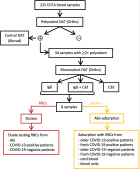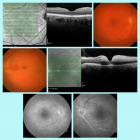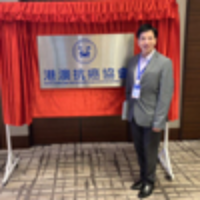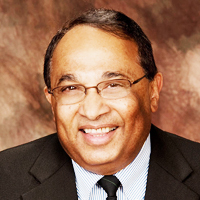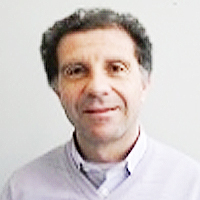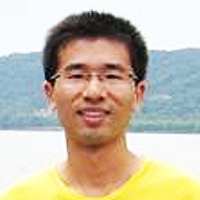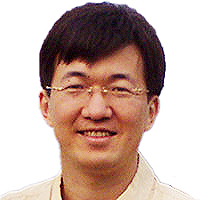Early Online (Volume - 9 | Issue - 1)
Satellite-Based Analysis of Air Pollution Trends in Khartoum before and After the Conflict
Published on: 16th January, 2025
This study investigates the impact of socio-political disruptions on air quality in Khartoum, Sudan, focusing on key pollutants: Aerosol Optical Depth (AOD), Carbon Monoxide (CO), Nitrogen Dioxide (NO₂), and Sulfur Dioxide (SO₂). Using Sentinel-5P satellite data (2020–2024) processed in Google Earth Engine (GEE), spatial and temporal variations in pollutant levels were analyzed before and after a significant war event in April 2023. The methodology included data acquisition, preprocessing (e.g., cloud masking, spatial filtering), monthly averages computation, visualization, and statistical analysis using Google Earth Engine (GEE), ArcGIS Pro, and Microsoft Excel. Results showed a marked post-war increase in AOD levels, attributed to infrastructure destruction, fires, and diminished industrial oversight, alongside spatially consistent pollution patterns in some regions. CO concentrations exhibited an overall decline due to reduced industrial activities and transportation, though localized anomalies were linked to concentrated emissions. Similarly, NO₂ levels dropped significantly, reflecting reduced vehicular and industrial activities, while sporadic increases suggested localized emissions like generator use. SO₂ demonstrated mixed trends, with reduced mean levels but increased variability, indicating sporadic high-emission events linked to emergency fuel use or conflict-related disruptions. This study uniquely combines high-resolution satellite data with advanced spatial and temporal analysis techniques to reveal the nuanced and multi-pollutant impact of socio-political conflicts on air quality in Khartoum, providing novel insights into the environmental repercussions of armed conflicts. These findings highlight the profound impact of socio-political events on atmospheric pollution dynamics, underscoring the need for robust urban planning, targeted environmental monitoring, and policies to mitigate air quality deterioration and address public health concerns in conflict-prone regions. The study emphasizes the importance of satellite-based monitoring to provide critical insights into the environmental repercussions of socio-political upheavals.
Investigation of Fuel Cells under Transient (Dynamic) Conditions to Improve the Efficiency of Polymer Electrolyte Fuel Cells in Dead-Ended Anode Mode: Review Article
Published on: 1st May, 2025
Polymer Electrolyte Membrane Fuel Cells (PEMFCs) operating in Dead-Ended Anode (DEA) mode present a promising alternative to traditional flow-through systems by simplifying design and reducing costs. However, their efficiency and durability are challenged by transient phenomena such as water accumulation, nitrogen buildup, and carbon corrosion throughout operation. This review investigates the dynamic behavior of DEA PEMFCs under dynamic operating states, aiming to improve their efficiency. By analyzing purge cycle optimization and transient response characteristics, we identify strategies to mitigate hydrogen loss, maintain voltage stability, and extend stack lifetime. The key findings indicate that precise purge scheduling and effective water management are critical for optimizing performance, with dynamic models providing insights into time-dependent processes. This study underscores the potential of DEA PEMFCs for high-efficiency applications provided transient effects are effectively managed.
Telemedicine on Earth can learn from Spaceflight
Published on: 15th July, 2025
Telemedicine has become widely used, primarily following or during the COVID pandemic.
However, it was used a long time ago in specific cases, like submarines and space. Telemedicine has been developed to facilitate diagnosis and treatment in areas without physicians, either because the area is isolated without a medical doctor (as in submarines and space) or because we need expertise.
This article is a review using studies selected via PubMed to collect generic knowledge on some technical details on both sides: Earth and Space, where telemedicine activity is regularly provided. The goal was to compare tools, data collected, and ways of improvement in each area. As experienced on both sides, indeed, the author has already worked in the spaceflight area with astronauts as well as doing teleconsultations with patients nowadays, which allows us to see how we could improve the way we are doing teleconsultation on Earth by teaching the users as done with the astronauts in the pre-flight period. It seems telemedicine will still be mandatory for a while because as seen in many countries even out of the scope of isolated area (or very difficult to be accessed (like mountains, desert …), more and more small cities and even bigger are lacking general practitioner (GP) as well as some specialists. Taking into account the time needed to have a functional doctor (for a GP mainly 8 years and for specialists longer, up to 12 years), telemedicine should improve and take a real place in the health system.
This review gives a few definitions, also the term telehealth or e-health is widely used. It refers to the use of an internet communication system to transmit data, receive data, communicate in real time, and guide and provide healthcare services to the patient remotely.
Improvements in technologies have mainly been done for Earth applications, and tools are becoming smaller and more resistant. The different purposes of using telemedicine are increasing nowadays, and it is not used only because of a lack of physicians but to teach remotely and avoid travel, as well as to have direct access /advice with a specialist. We can find a lot of reasons to use it.
Living in space is a real challenge for the human body used to gravity. As explained in a lot of reviews, the body in space loses bone, muscle, and has changes in heart volume and excitability. All the body systems will suffer from microgravity. Other factors impacting the body in space are the high level of ionized radiation, plus isolation. This is why, since the beginning of space flight, the so-called flight surgeon (more GP of the astronaut than a surgeon) is using telemedicine with the astronauts to prevent disease and, in case a medical event happens, to help the astronaut receive a diagnosis and efficient treatment. The actual ISS, International Space Station, allows real-time communication with the astronauts. This will be used for direct discussion or conferences to check the medical/psychological/fitness status. In other cases, remote access can always be done to communicate pictures or movies to provide advice on health or science. Furthermore, some medical tests will be done to guide the astronauts because some tools need real expertise to be interpreted correctly. In that case, eye exam is a good example: an astronaut uses devices following the recommendation of the specialist based on the NASA Console in Houston.
Of course, new improvements are needed to facilitate the next challenges of spaceflight, also going a step further beyond LEO (Low Earth Orbit), like doing an interplanetary trip and going to Mars. In that next scenario, to allow the mission where the Earth will not be seen anymore, when the real-time exchange will not be feasible, a new autonomy of the astronauts will be required.
As on Earth, space with all technologies like satellite is not only used as for direct health care facility with the astronauts but also in a more preventive way. It is possible to follow changes on the ground, climate changes too, as a witness to a possible new epidemic, and another specific use is to help in locating people.
Finally, we see how the way telemedicine is done in space could help improve telemedicine on the ground. First of all, we could improve telemedicine in many ways on Earth for classical consultation by increasing the utilization of simple tools like otoscope and… more in that case we need to train the patient like the astronauts are trained on ground before flying, this has a huge positive effect in allowing easier diagnostic and then better treatment for example when good pictures are provided.
The new tools as Artificial Intelligence (AI) or Virtual Reality (VR), on trial if needed for long-duration missions and specifically for missions beyond low Earth orbit, should be beneficial as well on Earth.
Maybe the big challenge for Earth’s Telemedicine is increasing the trust in practitioners who are still convinced that this way of providing medicine could be a competitor, and for that reason, they are reluctant to use it.
Nowadays, it should become more and more obvious that we need to work on some specific weak points, like security, training in using tools to make sure telemedicine is efficient and useful, where we have a lack of physicians.
Solid Garbage Treatment: Issues and Challenges
Published on: 16th July, 2025
The escalating volume of solid waste due to rapid urbanization, population growth, and industrialization poses significant environmental and public health challenges. Improper disposal of solid waste, especially organic and municipal garbage, leads to pollution of soil, air, and water, causing a surge in health risks and ecosystem degradation. Traditional waste management practices are often inefficient, expensive, and time-consuming. Composting and vermicomposting have emerged as eco-friendly, cost-effective, and sustainable alternatives for organic waste management. Vermicomposting, which employs earthworms to decompose organic waste into nutrient-rich compost, has shown potential in improving soil fertility, reducing pathogenic microbes, and recycling essential nutrients like nitrogen, phosphorus, and potassium. Various organic wastes such as agricultural residues, municipal waste, animal dung, and market garbage have been effectively treated through vermicomposting using species like Eisenia fetida and Eudrilus eugeniae. This review emphasizes the technological, environmental, and agricultural benefits of vermicomposting in transforming biodegradable solid waste into valuable compost, promoting sustainable waste management practices, and enhancing agricultural productivity.
Architectural Design of Geothermal Plants for Electricity Generation
Published on: 17th July, 2025
Geothermal energy, with a global installed capacity of 16.7 GW by 2023 and an annual generation of more than 97 TWh, is consolidating its position as a key pillar in the energy transition. From the pioneering Lardarello plant (1913) to The Geysers complex in California (the largest in the world with 1.5 GW of capacity), this energy source has demonstrated its potential to supply baseload electricity 24 hours a day, with a carbon footprint up to 10 times lower than fossil fuels. The article explores how the architectural design of these plants integrates geological, environmental, and technological factors. Systems such as binary cycles (which operate at 90°C and reduce emissions by 95%) allow the exploitation of low-temperature resources, expanding their applicability to non-volcanic regions. However, challenges remain: reservoir exploration is 30-40% uncertain, and initial costs exceed $4,500 per installed kW, according to the U.S. Department of Energy. Iconic cases like The Geysers illustrate innovative solutions. Since 2003, its recharge project with treated wastewater (11 million gallons/day) has revitalized the reservoir, extending its lifespan by decades. This circular economy approach not only optimizes resources but also reduces water conflicts in arid areas. The future points to disruptive designs: Enhanced Geothermal Systems (EGS), which could increase global potential tenfold by enabling dry reservoirs, and urban heating districts with heat pumps, capable of providing heating at -20°C. By 2030, drilling innovations—such as smart drill bits and robotics—could reduce costs by 50%, accelerating adoption. In a world that needs to double clean energy by 2040, geothermal energy is emerging not only as a renewable source, but as an architectural canvas where engineering and sustainability converge to redefine the energy landscape. Its evolution will depend on creatively overcoming technical barriers, transforming the Earth’s heat into the cornerstone of a decarbonized era.
Leveraging Green Building Technologies to Understand Sustainability in Bengaluru city
Published on: 24th July, 2025
Background: The motivation of this paper is to analyze the growing air pollution level in the city of Bengaluru, as it was once a green city but is now facing problems with the use of private vehicles, such as increasing levels of air pollutants. Green buildings focus on reducing their negative environmental impacts by using less energy and water, and causing less disruption to the environment during construction. Green buildings, which also strive to enhance human health through the design of healthy indoor spaces, are arguably less well-known.Objective: The main objective is to analyze the most suitable zone in Bangalore for the construction of green buildings. The review of existing green building technologies with the use of natural materials, renewable energy, water conservation, and indoor air quality.Method: The methodology will include a study of six green building literature reviews with eminent researchers and scientists. The main principles of green building include having indoor air quality of Nitrogen oxides, volatile organic compounds, and particulate matter are the most common air impurities released into the atmosphere by the variability of natural processes and human actions. The advantages of lessened energy and water use are well known, but the potential advantages of green buildings for human health have only lately come into focus. In addition, case study review for Electronic City, Whitefield, and International Airport in BangaloreResult: To address the comparative study of case study review, Bangalore city data was collected regarding the pollutant levels, then linear regression models were created and reviewed to design green buildings in the future. Conclusion: The goal of the study is to comprehend how toxins, a rise in urban population density, the usage of novel artificial resources, and traffic contamination all work together to worsen indoor air quality and increase harmful impacts on people.
Effect of Smartphones as Instructional Tool on Students’ Interest and Retention in Agricultural Water Engineering in Colleges of Education in Benue State, Nigeria
Published on: 24th July, 2025
This study used smartphones as an Instructional tool to determine their effects on students’ Interest and retention in Agricultural Water Engineering in Colleges of Education, Benue State, Nigeria. Five purposes of the study were stated, five research questions were posed and answered with means and standard deviations, and five hypotheses formulated and tested at 0.05 level of significance using Analysis of Covariance (ANCOVA). Quasi-experimental design of non-randomized pre-test post-test control group design was utilized. The research was carried out in two Colleges of Education in Benue State, Nigeria, with a population of 410 NCE Students. The population size of 200 NCE III students was sampled from colleges of Education, Katsina-Ala and Oju in the study area. The research instruments were ‘Basic Agricultural Water Inventory Test’ (BAWEIIT) and Basic Agricultural Water Retention Test (BAWERT), AND were validated by three experts. The reliability coefficient of the instruments was 0.74. The study found that the students who were taught with SIT demonstrated positive interest and enhanced their retention (XS=3.92) in Basic Agricultural Water Engineering than those taught without Smartphones. Also, there was no significant difference in the mean interest and retention rating scores (XS = 1.24 > 0.05), in Basic Agricultural Water Engineering (AGE, 324) concepts with Smartphone as an instructional tool (SIT). Based on findings, recommendations were made that smartphone (SIT) should be included among instructional materials in the scheme of lesson delivery for lecture by the National Commission for Colleges of Education (NCCE) in the curriculum for both teaching and learning activities at the Colleges of Education in Benue State. There should be constant, strong Wi-Fi connections power National Commission for Colleges of Education instructional via College administrators should orient lecturers and students by organizing workshops and seminars on how to effectively utilize smartphones for their academic activities. College administrators should endeavour to supervise implementation of smartphones as instructional tools in Agricultural Water Engineering and NCE courses for students
Capabilities Approaches Applied to the Homes of the Future
Published on: 30th July, 2025
The capabilities approach, based on the work of Sen and Nussbaum, proposes a transformation in housing design by prioritizing human well-being over economic criteria. This framework assesses individuals’ real opportunities to develop fulfilling lives (“capabilities”), responding to contemporary challenges such as climate change and urbanization. Recent studies indicate that 68% of architects integrate this approach into sustainable projects (Chen, et al. Journal of Sustainable Architecture, 2023, Q1), demonstrating its relevance for creating resilient and inclusive environments. The methodology combines theoretical analysis (UTAUT model for technology adoption and the capabilities approach) with global case studies. Designs are examined that incorporate: Smart technology: IoT and AI systems for security and energy efficiency; Biophilic design: Integrating nature into interior spaces; and Net-Zero Homes (NZEH): Energy self-sufficiency through renewables. Data were collected from projects in Belgium, Australia, and the US, assessing social and environmental impact using well-being and sustainability metrics. We determined the results and discussed the approach using Positive Impact: Smart-technology homes improve autonomy in older adults by 72% (Liu, et al. Gerontology, 2022, Q1). Projects such as Savonnerie Heymans (Brussels) reduced energy consumption by 40% through solar panels and thermal insulation, while increasing social cohesion with community spaces. Biophilic design: Associated with 30% less stress and 25% higher productivity; Barriers: High initial costs (up to 20% more than conventional housing) and regulatory complexity limit widespread adoption. Furthermore, feminist and decolonial critics warn that the approach can perpetuate inequalities if it ignores sociopolitical contexts. In conclusion, the capabilities approach revolutionizes future housing by merging human well-being, sustainability, and inclusion. However, its implementation requires overcoming economic and ethical challenges: Accessibility: Universal designs for vulnerable populations. Collaborative governance: Policies that balance innovation, data privacy, and affordability. Cultural adaptation: Integration of non-Western perspectives. Projections indicate that NZEHs will grow by 40% by 2030, highlighting their potential to build equitable and resilient societies.

HSPI: We're glad you're here. Please click "create a new Query" if you are a new visitor to our website and need further information from us.
If you are already a member of our network and need to keep track of any developments regarding a question you have already submitted, click "take me to my Query."










